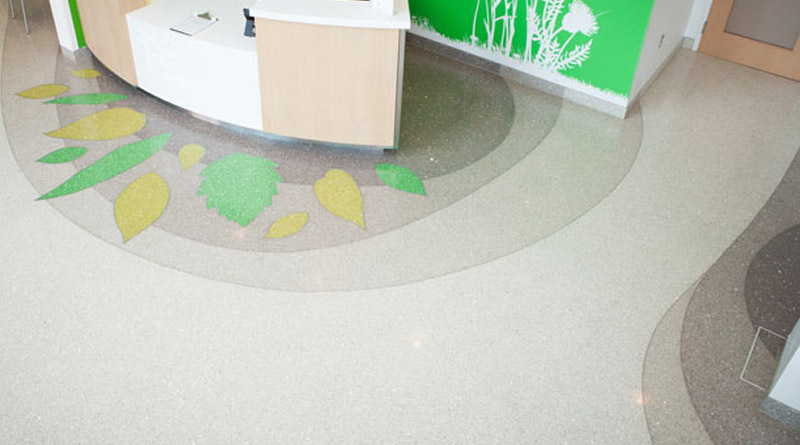Best Practices When Considering Hospital Floors
By Aaron Hartung
From cleanliness and accessibility to heavy wear, hospitals face a unique set of challenges. Flooring is no exception. It’s a crucial part of creating a quality care setting. Below, are various factors to consider when choosing flooring for a health care facility and also steps on how to incorporate evidence-based design into a hospital flooring plan.

Photo Credit: Brad Feinknopf
When discussing evidence-based design in hospital flooring, it’s a smart bet to lean heavily on the guidelines provided by The Center for Health Design (CHD), which, in 2012, published a peer-reviewed guide to implementing evidence-based design (EBD) in the selection of health care flooring. The guide draws on EBD and original research, detailing industry best practices for flooring. This approach sees real results that help promote the well-being of those who walk through a health care facility’s doors. Here are some key considerations for weighing your health care flooring options.
Pay Attention to Flooring
The entrance of a hospital, its corridors and clinical areas serve different purposes and will face different pressures. Entrances, for instance, are the first areas patients, families and visitors see in a hospital. They also experience some of the heaviest foot traffic. A health care facility will want a welcoming floor that promotes the specific design vision and makes a strong first impression for its patrons. Corridors also see heavy use, including foot traffic and heavy rolling loads, such as equipment carts, stretchers, med carts and wheelchairs. Clinical areas are at the highest risk of accumulating pathogens and other harmful germs.
Minimizing Fall Risk
Choosing the right flooring can minimize the risk of patients sustaining falls, so hospital flooring should be slip-resistant, impermeable and easily cleaned. That’s all easy enough, but other EBD standards such as recommendations for finishes are not as obvious. The finishing on hospital flooring should have a low reflectance value as to prevent glare, and joints and seams should be few and far between in order to prevent tripping.
Texture & Noise Absorption
Texture affects many aspects of the flooring’s performance, ranging from noise absorbance to reducing injuries related to falling. Preventing falls is important, but they will inevitably happen, and floors that have energy-absorbent properties will minimize injuries of staff or patients who fall. This can also be achieved through underlays that will increase cushioning. Underlays and finishes can also be used for noise absorbance, reducing noise from rolling carts or heavy foot traffic.
Reducing Staff Fatigue
Nurses, doctors and other health care facility personnel work long shifts. And, for much of those shifts, they’re on their feet. Cushioned flooring or mats can reduce staff fatigue, saving their feet and their sanity. However, CHD recommends that cushioning be combined with roller mobility, so that equipment can still be transferred easily.
Minimizing Risk of Infections
Health care associated infections (HAIs) are a health care facility’s nightmare. EBD can guide hospitals in choosing flooring that best mitigates the risk of HAI, while improving the overall patient experience. CHD has a host of recommendations to this end. It recommends against using carpet, especially in burn units and operating rooms, where the risk for airborne pathogens is high.
Going Green
LEED guidelines shouldn’t be ignored when choosing a flooring solution that works for you. In addition to allowing your facility to be in accordance with USGBC standards, choosing the right floor coverings will also improve the indoor air quality of your facility. The LEED for Healthcare guide offers guidance on how to best accomplish this.
Aaron Hartung is the marketing manager at Spectra Contract Flooring, the largest commercial flooring contractor in the U.S. He can be reached at 303-778-8665.

